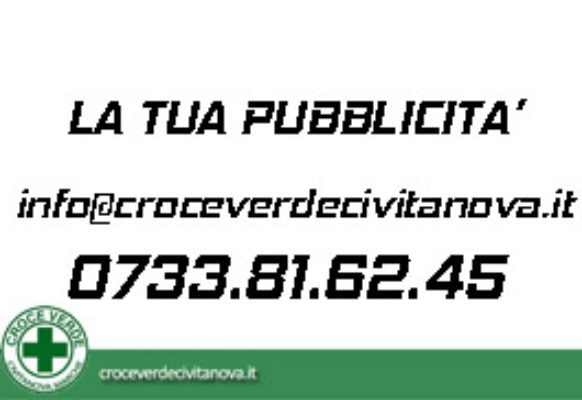Asset Depreciation Calculator
Content
In the article, we have seen how the straight-line depreciation method can depreciate the asset’s value over the useful life of the asset. It is the easiest and simplest method of depreciation, where the asset’s cost is depreciated uniformly over its useful life. After the machine’s useful life is over, the asset’s carrying value will be only $ 2000. The management will sell the asset, and if it is sold above the salvage value, a profit will be booked in the income statement, or else a loss if sold below the salvage value. The amount earned after selling the asset will be shown as the cash inflow in the cash flow statement, and the same will be entered in the cash and cash equivalents line of the balance sheet.
- The straight-line depreciation method makes it easy for you to calculate the expense of any fixed asset in your business.
- Salvage Value Of The AssetSalvage value or scrap value is the estimated value of an asset after its useful life is over.
- Residual value is the estimated value of a fixed asset at the end of its lease term or useful life.
- Whether you’re creating a balance sheet to see how your business stands or an income statement to see whether it’s turning a profit, you need to calculate depreciation.
- The vast majority of nonmanufacturing small businesses use straight-line depreciation because of its simplicity and reasonable allocation of costs across years.
This will give you your How To Calculate Straight Line Depreciation depreciation deduction under the straight-line method. You can use this method when you know how long an asset will be in service and what the salvage value will be at the end of that service period. No single depreciation method is perfect, but each one has its own set of benefits and limitations.
Overview: What is straight line depreciation?
We record $15,900 per year, which after seven years will be $111,300. We’ll record the final $700 in year eight to arrive at the total cost of $112,000. The small amount of depreciation in year eight is due to the group life being slightly longer than seven years in Step 3. Value of asset is the value at which the asset is recorded in the balance sheet. Taking a step back, the concept of depreciation in accounting stems from the purchase of PP&E – i.e. capital expenditures .
How to Calculate Straight Line Depreciation: Step-By-Step – The Motley Fool
How to Calculate Straight Line Depreciation: Step-By-Step.
Posted: Fri, 05 Aug 2022 07:00:00 GMT [source]
Using this method, the cost of a tangible asset is expensed by equal amounts each period over its useful life. The idea is that the value of the assets declines at a constant rate over its useful life. A change in the estimated salvage value or a change in the estimated useful life of an asset that is being depreciated is not considered to be an accounting error.
How to Calculate Straight Line Depreciation (Step-by-Step)
Once you have calculated this figure, subtract that amount each year from the asset value to find its current value or book value. For tax purposes, businesses are generally required to use the MACRS depreciation method. It’s an accelerated method for calculating depreciation because it allows larger depreciation write-offs in the early years of the asset’s useful life. When you purchase the asset, you’ll post that transaction to your asset account and your cash account, creating a contra account in order to keep track of your accumulated depreciation.
They are normally found as a line item on the top of the balance sheet asset. Divide the estimated useful life into 1 to arrive at the straight-line depreciation rate. There are good reasons for using both of these methods, and the right one depends on the asset type in question. The straight-line depreciation method is the easiest to use, so it makes for simplified accounting calculations. According to straight-line depreciation, this is how much depreciation you have to subtract from the value of an asset each year to know its book value.
What Is Straight Line Depreciation in Accounting?
It means that we https://quick-bookkeeping.net/ to retire the asset earlier than asset #2. But since these assets are interrelated, it would be inconsistent to depreciate them individually. There are instances wherein assets used in businesses are interrelated. For example, office desktops, chairs, tables, and copiers are often used together. Hence, it’s sensible to depreciate them as a group instead of depreciating them individually.
- To calculate depreciation using a straight line basis, simply divide net price by the number of useful years of life the asset has.
- To achieve this requirement, accountants must estimate some amounts.
- These methods can be more accurate when dealing with items such as computers or vehicles, since those tend to lose the most value within the first few years of use.
- Get instant access to video lessons taught by experienced investment bankers.
- He or she should also be well versed in recent changes to tax laws, including how depreciation deductions can be used in the current tax year.
- Use this calculator to calculate the simple straight line depreciation of assets.
Each digit is then divided by this sum to determine the percentage by which the asset should be depreciated each year, starting with the highest number in year 1. Capitalized assets are assets that provide value for more than one year. Accounting rules dictate that revenues and expenses are matched in the period in which they are incurred. Depreciation is a solution for this matching problem for capitalized assets because it allocates a portion of the asset’s cost in each year of the asset’s useful life. For assets purchased in the middle of the year, the annual depreciation expense is divided by the number of months in that year since the purchase. Depreciation is a way for businesses to allocate the cost of fixed assets, including buildings, equipment, machinery, and furniture, to the years the business will use the assets.
What Is Straight Line Depreciation?
This method was created to reflect the consumption pattern of the underlying asset. It is used when there’s no pattern to how you use the asset over time. Now, $ 1000 will be charged to the income statement as a depreciation expense for eight straight years. Although all the amount is paid for the machine at the time of purchase, the expense is charged over time. We can also calculate the depreciation rate, given the annual depreciation amount and the total depreciation amount, which is the annual depreciation amount/total depreciation amount. Ideal for those just becoming familiar with accounting basics such as the accounting cycle, straight line depreciation is the most frequent depreciation method used by small businesses.
If you don’t expect your asset’s expenses to change greatly over its useful life, it may be the best choice for calculating depreciation. The sum-of-the-years’ digits method is another accelerated depreciation method that takes into account the increasing cost of an asset as it wears down or becomes obsolete. If you’re unsure or unable to arrive at an estimated useful life for a newly acquired asset, one option is to use the lives given in IRS Publication 946.
Step 1. Purchase Cost, Useful Life and Salvage Value Assumptions
Now, take a look at the table below to see how the value of the device depreciates over its useful lifetime. A significant change in the estimated salvage value or estimated useful life will be reported in the current and remaining accounting years of the asset’s useful life. In our example, the title transfers, which means at the end of the lease term the lessee will own the asset and continue depreciating it. However, the useful life of the equipment in this example equals the lease term so at the end of the lease, the asset will be depreciated to $0. Try to use common sense when determining the salvage value of an asset, and always be conservative.






